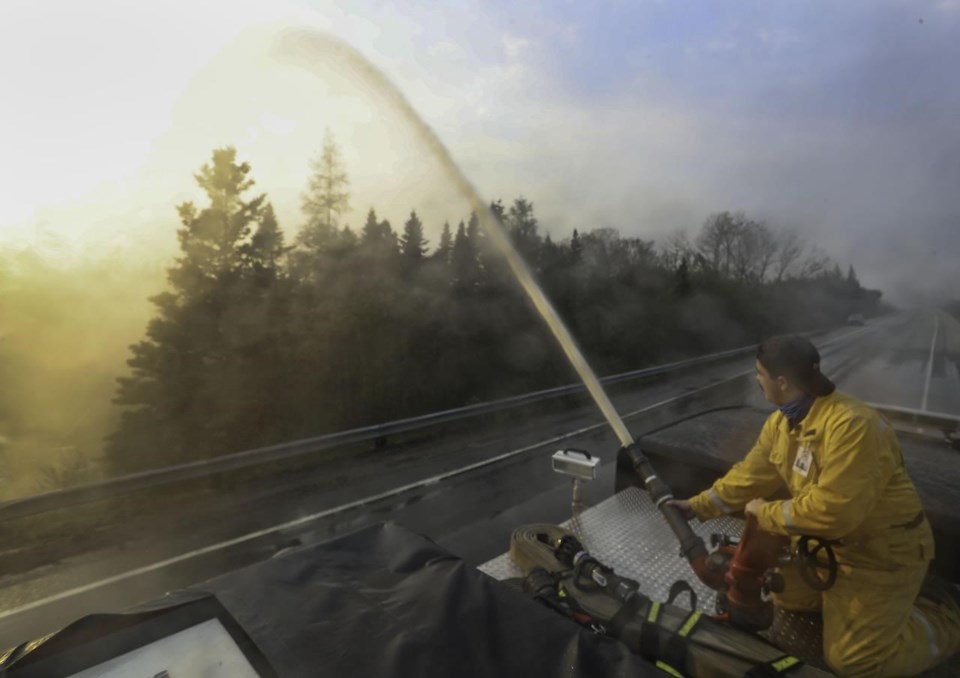HALIFAX — Most evacuation orders were lifted Friday across Nova Scotia, almost two weeks after a series of unprecedented wildfires broke out in the southwestern corner of the province and in suburban Halifax.
Officials in Shelburne County, where the largest wildfire in the province's history continued to burn out of control, lifted all evacuation orders at noon. The wildfire there, which started May 27 near Barrington Lake, hasn't grown since the weekend thanks to the work of firefighters and the wet, cool weather.
The Barrington Lake fire forced more than 6,000 people from their homes and destroyed 60 homes and cottages, as well as 150 other structures. By last weekend, the fire had grown to 235 square kilometres.
The municipalities of Shelburne and Barrington, which are both within Shelburne County, have asked people to stay out of the area for a few days unless they have a reason to be there. Residents were also warned that some areas were still without electricity, though power was expected to be restored Friday.
In the Halifax Regional Municipality, evacuation orders were lifted at 1 p.m. for all but a small portion of the subdivisions closest to where the fire started on May 28.
"Homeowners should remain cautious when returning to their property and be aware of any risks, such as collapsed driveway culverts and damaged trees," the municipality said Friday in a statement.
Evacuation orders remained in place for three small areas that experienced the most damage.
On Thursday, municipal officials said residents who live within the "significant impact zone" should be able to return home within the next 10 days. Officials said the region must first complete a review of infrastructure, install traffic controls and place fences around destroyed properties.
"Recovery efforts are underway and risks need to be assessed before further evacuation orders are lifted," the municipality said Friday. "The fire ... is contained; however, hot spots and flare-ups continue in some areas and remain a safety risk."
Driven by strong winds and fuelled by tinder-dry forests, the fast-moving Halifax-area fire destroyed 151 homes and dozens of other structures. In all, more than 16,000 people were forced to flee their homes in the Upper Tantallon and Hammonds Plains areas, which are about a 30-minute drive northwest of the city's downtown.
The fire spread across 9.5 kilometres, but it was largely contained on Saturday. Some evacuation orders were lifted earlier this week, and by Friday morning about 4,000 people in the Halifax region were still waiting to return to their homes, some of which were still without electricity.
Residents with wells were being told not to use the water for drinking, cooking or washing. Officials say the water must be tested because it could be contaminated by residue from the fire, bacteria, chemical fire retardants or fuel from ruptured tanks. The municipality is offering residents free test kits.
The region's water utility has set up water stations where residents can fill their own containers with drinking water.
The Canadian Red Cross said Friday it is working with the provincial government to revise the Halifax evacuation map following reports that some residents who were evacuated from their homes were disqualified from receiving $500 in government aid for those subject to evacuation orders.
The Red Cross distributed the funds for the province.
"A small number of households that were previously excluded ... have been added to the map of mandatory evacuation areas and therefore are eligible," Red Cross spokesman Dan Bedell said in an email.
This report by The Canadian Press was first published June 9, 2023.
Michael MacDonald, The Canadian Press




